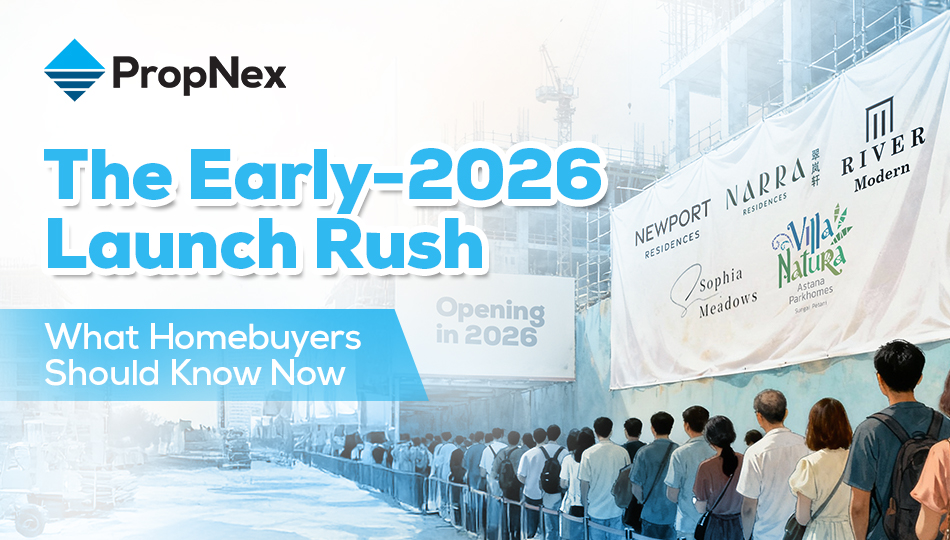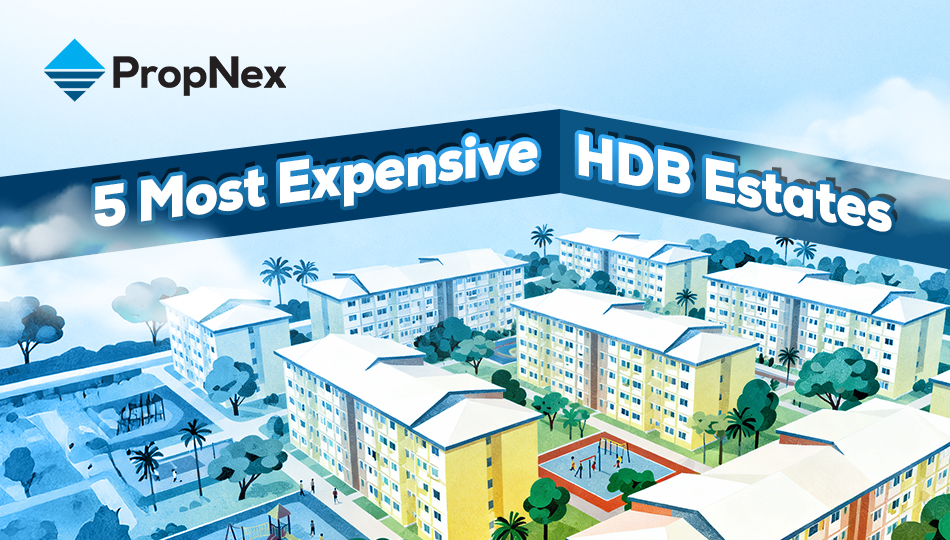The Evolution of HDB Flats: A Guide for Locals and Expats

Singapore's Housing and Development Board (HDB) flats are often considered a hallmark of the city-state's rapid development and commitment to affordable housing. Established on 1 February 1960, HDB has played a pivotal role in addressing Singapore's housing needs, transforming the urban landscape, and fostering a sense of community.
In this article, we will take a trip down memory lane, exploring the evolution of HDB flats and offering insights into the local property landscape for both Singaporeans and foreigners new to the country.
Source: Roots
As mentioned earlier, the HDB was formed on 1 February 1960 in response to a critical housing shortage in post-colonisation Singapore. During this period, a significant portion of the population lived in overcrowded and unsanitary conditions; as many as 83 people or 11 households shared a shophouse space. HDB's mission was clear: provide affordable, high-quality housing to Singaporeans. The early years saw the construction of simple, functional flats aimed at addressing the housing crisis quickly. These initial units were often small and functional, with basic amenities, but they fulfilled the need for rapid urbanisation and shelter for the masses.
Source: hdb.gov.sg (Toa Payoh Town)
Source: Teoalida
By the 1980s, HDB had built hundreds of thousands of homes, transitioning Singapore from slums and kampongs (Malay term for villages) to a nation with a majority home-owning population. The early designs were uniform and unadorned, focusing on practicality rather than aesthetics, but they laid the foundation for the future of public housing.
Expansion and upgrading (1990s-2000s)
Source: HDB (Tampines Town)
As Singapore's economy grew, so did the aspirations of its people. During the 1990s, HDB began introducing improvements to the size, design, and quality of its flats New towns like Tampines and Woodlands were planned, integrating more amenities and infrastructure. Flats became larger, with enhanced features, such as built-in wardrobes and modern kitchens. This era also saw the introduction of the "Upgrading Programme," where older flats were refurbished to align with contemporary standards.
Source: Teoalida
The focus shifted towards building entire self-sustained communities, with town centres, schools, green spaces, and transport hubs incorporated into the town-planning process. In tandem, the introduction of Executive Apartments and Executive Maisonettes catered to the growing middle-class, who desired larger living spaces while still benefiting from subsidised housing.
Current and future HDB developments (2010s-Present)
The HDB flats of today reflect Singapore's move towards sustainable and high-tech living. The introduction of the Build-To-Order (BTO) scheme has allowed for more flexibility, as flats are built only after a sufficient number of buyers have applied. This reduces excess supply and aligns development more closely with demand.
Source: Channel News Asia
Recent developments emphasise green living, with features such as solar panels, rainwater harvesting, and energy-efficient lighting becoming more common. Future estates like Tengah, Punggol Northshore, and Bayshore, are designed as "smart" towns, with a focus on sustainability and incorporating cutting-edge technology like smart home systems and car-lite streets.
Source: Today Online
HDB offers a variety of flat types to suit different family sizes and income levels. For Singaporeans, HDB flats provide an affordable entry point into the housing market, while for foreigners, understanding these types is crucial when considering rental or resale options.
- Studio and 2-room flats: These are designed primarily for singles, elderly citizens, or small households. They are compact but functional, providing an affordable option for those with simpler living needs.
- 3-room flats: Popular among smaller families and young couples, 3-room flats typically consist of two bedrooms and are suitable for those looking for a balance between space and affordability.
- 4-room and 5-room flats: These are the most common types of flats, catering to larger families. The 4-room flat typically has three bedrooms, while the 5-room flat offers even more spacious living and dining areas, making them ideal for growing families or those who desire extra space.
- Executive apartments and executive maisonettes: These larger flats offer more space and comfort, often with additional rooms or split-level designs (in the case of maisonettes). They are suitable for those looking for a more luxurious HDB living experience while still benefiting from public housing prices.
- Executive condominiums (ECs): ECs are a hybrid between public and private housing, and they were introduced to cater to the "sandwiched class," whose income exceeds the eligibility criteria for HDB flats but may not yet afford private properties. ECs are built by private developers by receiving government subsidies, making them more affordable than private condos. After 10 years, ECs are fully privatised and can be sold on the open market to foreigners, providing owners with opportunities for capital appreciation. They often come with facilities similar to private condos, such as security services, gyms, and swimming pools, offering a more premium lifestyle as compared to the rest of the HDB types.
For foreigners, the rules around purchasing HDB flats are more restrictive. A single PR is not able to purchase a new or resale HDB. A PR married or engaged to a Singapore Citizen can buy a new or resale HDB through the HDB Public Scheme or Fianc/Fiance Scheme, respectively. However, there are conditions they need to fulfil.
Foreigners who are not PRs are generally limited to only renting HDB flats or buying or renting private. The distinction is crucial, as it shapes the options available for new residents and expats. For ECs, only Singaporeans can purchase them during their initial sale phase. After privatisation, however, ECs become an attractive option for expats looking for private residential properties at relatively lower prices than typical private condos.
HDB flats have been more than just homes - they have been instrumental in shaping Singapore's social fabric. One of the key policies, the Ethnic Integration Policy (EIP), was introduced to ensure a balanced mix of ethnic groups within HDB estates. This prevents ethnic enclaves from forming and promotes racial harmony by fostering interaction among different communities.
Furthermore, HDB's designs encourage communal living. The ubiquitous "void deck," for instance, is a key feature where residents hold social gatherings, funerals, and weddings, promoting a sense of shared community. In fact, the plain, open void decks that most of us grew up with have become something of a past in newer estates, as HDB develops new ways to increase social spaces in the form of community living rooms.
Source: The Straits Times
Apart from community living rooms, HDB has also introduced estate pavilions to "replace" void decks where residents can book to hold events, such as funeral wakes and weddings. The town planning approach, which clusters housing around schools, markets, and transport hubs, fosters a socially cohesive and self-sufficient environment.
For many Singaporeans, HDB flats are not just a roof over their head but also significant financial assets. Flats are often a stepping board for most Singaporeans to start with before they upgrade their lifestyle. Singaporeans typically financed them through their Central Provident Fund (CPF), allowing them to build wealth while owning their homes.
That being said, one needs to have clarity on using their CPF to pay off their home loan. Using it for an extended period can lead to increased accrued interest which can significantly increase the amount you will need to repay to your CPF account when you sell your property.
The resale market offers the potential for capital appreciation, especially for flats in prime estates or those near public transports. In recent years, the phenomenon of million-dollar HDB flats has emerged, where resale HDB flats, especially in desirable locations, such as Bishan and Bukit Merah, have fetched record prices exceeding a million Singapore dollars. This towering trend has sparked debates about affordability and the role of public housing, but it also highlights the strong investment potential of HDB flats.
Source: The Straits Times
For foreign investment in the property market, while direct ownership may be limited, the HDB resale market offers insights into Singapore's real estate trends, making it a barometer for understanding broader property movements in the city-state.
Foreigners looking to navigate Singapore's property market should understand that while HDB flats offer affordable housing for locals, there are restrictions on foreign ownership. PRs can purchase resale flats but must meet a minimum residency requirement, while foreigners on work permits or other passes are typically limited to solely renting. PRs and foreigners, however, can purchase private properties.
Choosing HDB does not mean less atas. Renting HDB flats has been a popular option for many expatriates as it not only offers a more affordable alternative to private condominiums, but it also offers them the opportunity to live like most locals. While HDB flats may not have the extensive facilities of condos, such as gyms or pools, they provide ample living space and are located in well-connected neighbourhoods.
The future of HDB lies in adapting to new challenges, such as an ageing population, sustainability goals, and evolving family structures. HDB's "smart" estates, such as Tengah, showcase the future of housing with green features and integrated technology to support smart living. As Singapore continues to modernise, the role of HDB flats will remain central to providing affordable, high-quality housing for all.
Source: The Straits Times
HDB is also addressing the challenge of an ageing population by building more senior-friendly flats, equipped with features like grab bars and non-slip titles. Additionally, the government is looking at ways to further future-proof housing with greater flexibility in flat designs and layout to accommodate changing family needs.
In fact, HDB partnered with the Ministry of National Development and the Ministry of Health in developing community care apartments which integrate senior-friendly flats with care services that can be scaled according to social activities and care needs to support senior citizens to age independently.
Source: The Straits Times
The evolution of HDB flats is a testament to Singapore's success in urban planning and social engineering. From the simple blocks of the 1960s to today's eco-friendly, smart estates, HDB has played a pivotal role in shaping the lives of Singaporeans.
For foreigners, understanding the intricacies of HDB flats offer valuable insights into the unique housing landscape of Singapore. Whether you are a local seeking to purchase your first flat or a foreigner exploring rental options, HDB remains an essential pillar of the local housing system.
Views expressed in this article belong to the writer(s) and do not reflect PropNex's position. No part of this content may be reproduced, distributed, transmitted, displayed, published, or broadcast in any form or by any means without the prior written consent of PropNex.
For permission to use, reproduce, or distribute any content, please contact the Corporate Communications department. PropNex reserves the right to modify or update this disclaimer at any time without prior notice.












